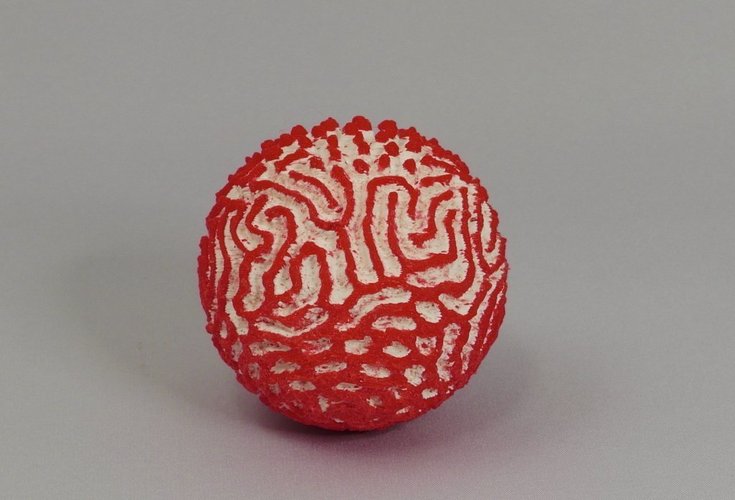
Reaction-Diffusion Ball
pinshape
My Practice of Reaction-Diffusion Model Generates Stunning Patterns on Animal Surfaces The reaction-diffusion system is a powerful model used to produce intricate patterns found on certain animals such as zebras or fish. To understand this process, visit http://www.karlsims.com/rd.html for an excellent explanation. I utilized C programming to create a calculated sphere world and developed an OpenSCAD subprogram that essentially mimics the functionality of a C program. To modify the reaction-diffusion pattern, simply edit "rdball2.c," compile it, run it, and redirect the output to "rdball-sub.scad." The resulting C program output is an OpenSCAD subroutine that draws a single polyhedron, allowing the main OpenSCAD program "rdball.scad" to be reduced to just one line. The -inner.stl and -outer.stl files were modified using Blender. I created a sphere with a specific radius within the rdball, then cut the rdball in half using a boolean difference operation for the outer file and performed a boolean union for the inner file. Each color was printed using a dual-filament 3D printer. Designing This Algorithm The Gray-Scott model is applied to a sphere world where each node on the surface of the sphere has "u" and "v" values based on the Gray-Scott model. The Laplacian is calculated across this network, thanks to Dr. Ide from Kanagawa University. The sphere itself is simulated by inscribing an octahedron and projecting it onto the sphere's surface. The .stl files provided are constant k/f/ru/rv (rdball2.stl) and k varies depending on the z height or latitude of the ball (rdball2-vary.stl). Both can be generated by adjusting the INITK1 and INITK2 values in the C program.
With this file you will be able to print Reaction-Diffusion Ball with your 3D printer. Click on the button and save the file on your computer to work, edit or customize your design. You can also find more 3D designs for printers on Reaction-Diffusion Ball.
